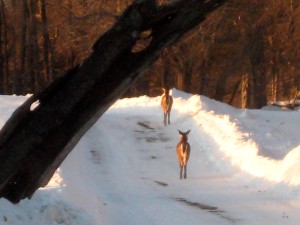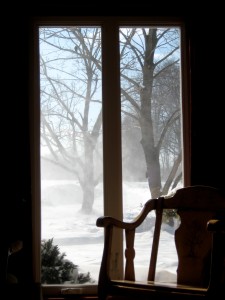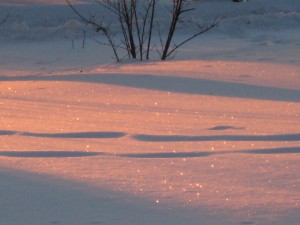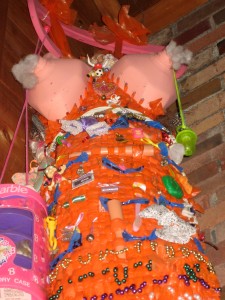
– Photo by Jan Ketchel
This past weekend, as Jan and I immersed ourselves in Dr. Elmer Green’s The Ozawkie Book of the Dead, I wrote: “If we intend to live with abandon we must first fully relive with abandon.” This was in reaction to Elmer’s exposition of the depths of the subconscious that completely encloses us in the bardos* of our unrealized selves, unable to find our way to the light.
I was reminded of the many traumatized individuals I have known, through the years, who were unable to be helped by lamas in their Buddhist retreats to release attachment to the impact of their traumatic pasts through mindfulness training.
Though mindfulness can still the mind and the central nervous system, it cannot absolve one of the necessary energetic encounters with unprocessed traumatic experience dissociated in the body and the psyche.
I picked up A Path with Heart, by Jack Kornfield, off the bathroom library shelf and opened to the chapter entitled “Psychotherapy and Meditation” where Jack, the Buddhist monk, eloquently confirms my above observations.
The next morning, from the same shelf, I picked an obscure book that Jan had purchased some time ago, entitled Activation of Energy by Pierre Teilhard de Chardin, and opened to “The Place of Technology.” In this chapter de Chardin wrote, in 1947:
“…From the psychic point of view the earth would seem to be becoming progressively hotter, continually even more incandescent. If we consider not its harmony but its general intensity, the earth has never been through a phase to equal the present.” (p. 161)
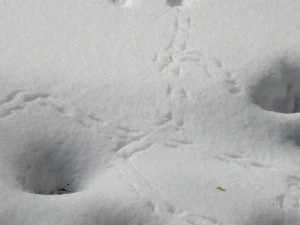
where we’ve been, where we’re going,
and what’s next?
– Photo by Jan Ketchel
Contrary to the Sunshine State’s recent ban on DEP officials using the term “climate change,” the truth is, global warming has us heated to a phase unequal to the past. And we find ourselves at an evolutionary crossroads as a result; the heat is boiling over everywhere. The challenge, as de Chardin describes, is for the light of consciousness to fully take charge of evolution now. But how will we bring light to the earth?
Last week, Netanyahu delivered an unprecedented speech to Congress, breaking ranks with all diplomacy as he anxiously expressed his unwavering position: Iran can never be trusted, ever. Don’t make a deal.
Obama responded to Netanyahu’s speech, saying that he heard no new ideas or solutions with this stay-the-course approach. In fact, the rise of terrorism throughout the world appears to be fueled in large measure by the powerlessness of this stalemate.
The other day, 47 Republican Senators wrote a letter to Iran warning that regardless of Obama’s negotiations regarding a nuclear arms agreement, Congress would undo any agreement when he left office. Some view this unprecedented behavior by the Senate as treason.
The heating up of politics and international tensions is part and parcel of the growing charge to humankind to shed truthful light on its problems and find solutions based on right action. There is no great God gonna come from the sky and make everything all right.
We are charged, just as we are in recapitulation, to find our way through the hazy bardos of our largely subconscious planet. In de Chardin’s first essay in Activation of Energy, “The Moment of Choice,” written at Christmas 1939 on the eve of World War II, he states:
“This will be the second time, then, in the span of one human life that we shall have known War. The second time, did I say? Is it not, rather, worse than that? Is it not the same Great War [WWI] that is still raging, the same single process: a world being re-cast — or disintegrating? (p. 13)
Well, here we are again. It’s not a new war; it’s a continuation of the same disintegrating process, heating up evermore powerfully, begging us to recapitulate, to face all the horrors and all the truths of our choices and behaviors since we took over the wheel, since we ate the apple in the garden from the tree of knowledge. We’ve been driving ever since and look where it has gotten us!

– Photo by Jan Ketchel
Unless we face ourselves and act in the light of truth and consciousness the globe will continue to heat up under the stewardship of the dark side: greed and self-interest.
Yes, there are guides, angels, bodhisattvas, masters, all dedicated to helping us find our way to union with that light, but none of those entities can lift us out of the bardos into the light. We must boil in our bardos and free ourselves before we can benefit from such guidance. Channels broadcast messages everywhere, but do we listen? Can we listen? On what are we satiated?
When I posed these issues to the I Ching yesterday, I received hexagram #27 The Corners of the Mouth (Providing Nourishment). This hexagram is a picture of an open mouth. The real crux of the issue is, what will we put into our mouths and what words will come out of our mouths?
The bottom three lines of the hexagram refer to actions that seek nourishment for oneself alone: actions of greed. The top three refer to nourishment for others: compassion.
I received the six in the fourth place. Here the I Ching states: “…this line refers to one occupying a high position and striving to let his light shine forth. To do this he needs helpers, because he cannot attain his lofty aim alone. With the greed of a hungry tiger he is on the lookout for the right people. Since he is not working for himself but for the good of all, there is no wrong in such zeal.” (p. 110 Wilhelm translation.) The guidance here: turn the hunger of greed toward the light; bite through to the truth.
I also got the nine at the top. Here the I Ching states: “This describes a sage of the highest order, from whom emanate all influences that provide nourishment for others. Such a position brings with it heavy responsibility. If he remains conscious of this fact, he has good fortune and may confidently undertake even great and difficult labors, such as crossing the great water. These undertakings bring general happiness for him and for all others.” (pp. 110-11)
The guidance here makes it pretty clear that it’s time to do the right thing, to take full responsibility and cross the waters of our personal recapitulations just as the world, as a collective unit, must face the truths of the choices of its human nature and compassionately right the course.

– Photo by Jan Ketchel
There are no saviors. We are the saviors. We’ve been charged with using our heated up planet, to use its light to make things right, deepening its journey into the light.
Journeying into the light,
Chuck
* Bardos refers to the Tibetan after-death bardo states, but is intentionally used in a broader context to suggest that we are in the bardos all the time, in a confusing state of disorientation that we must come to terms with (e.g. in recapitulation) so we can proceed into new life and higher realms of consciousness.


